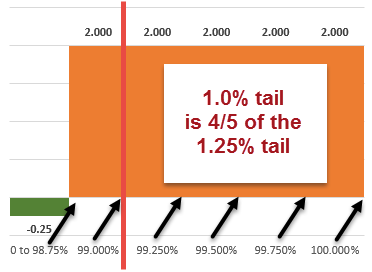Hello, can anyone please explain the following?
How is VaR NOT subadditive?
To calculate portfolio VaR, we would use Portfolio mean & Portfolio standard deviation (which includes effect of correlation between each individual security in the portfolio), thus when we calculate Portfolio VaR it would always be equal or less than the aggregate VaR of each individual security in the portfolio, which satisfies the subadditivity criteria.
Also, please explain coherent risk measure (in simple terms)
if we slice the whole return distribution (where as in ES we slice only the tail portion) and weight each quartile according to risk aversion, how does this help in analysing the riskiness of a portfolio or security. and how is it better than VaR or ES.
Thank you.
How is VaR NOT subadditive?
To calculate portfolio VaR, we would use Portfolio mean & Portfolio standard deviation (which includes effect of correlation between each individual security in the portfolio), thus when we calculate Portfolio VaR it would always be equal or less than the aggregate VaR of each individual security in the portfolio, which satisfies the subadditivity criteria.
Also, please explain coherent risk measure (in simple terms)
if we slice the whole return distribution (where as in ES we slice only the tail portion) and weight each quartile according to risk aversion, how does this help in analysing the riskiness of a portfolio or security. and how is it better than VaR or ES.
Thank you.

